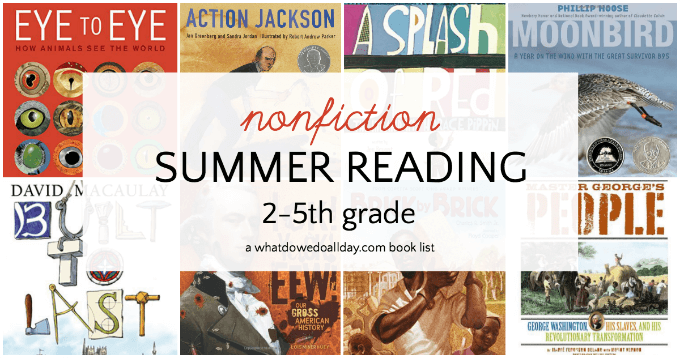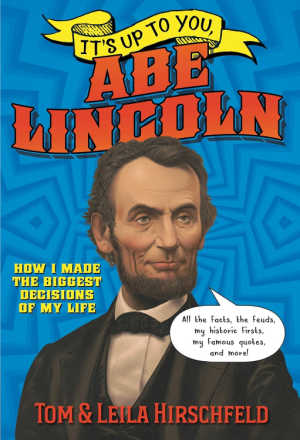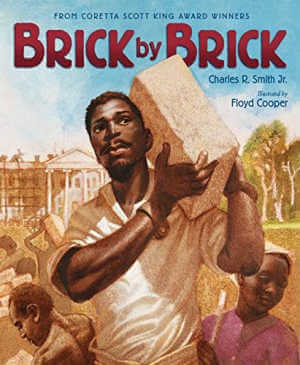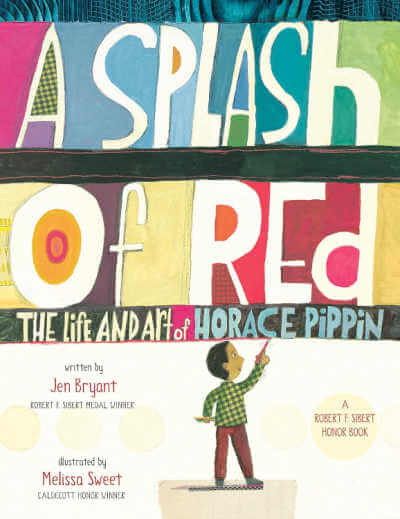Just like my 4th grade fiction summer reading list, these nonfiction book selections are good choices for 3rd and 5th graders, too. Like most boys his age, my 4th grader loves reading nonfiction books on topics he loves: math, science and birds. This list contains a bit of those subjects, but since I want him to expand his horizons, I am going heavy on the art and history titles.

This list is a mixed bag of titles, there's no hard and fast theme, just a few books I am going to give my 9 year old to read. Of course, no list can be comprehensive, but I hope these books give you a start. You can also add to your library nonfiction book pile by using my list of 50 science picture books, which includes 5 books each for 10 topics.
These books are all heavy on the illustrations and photographs, even the longer ones. Some of them are standard picture book-length that you can read aloud, either to your 4th grader or to younger kids. (Note: covers and titles are affiliate links.)
Nonfiction Books for 4th Graders and 5th Graders
Built to Last is a hugely long book that may indeed keep your kids busy all summer. I hardly need introduce Macaulay, his books are so famous. Lots of detail, intricate illustrations and lengthly explanations of structures will suck kids in. Kids who like to build and engineer stuff will be fascinated. Younger kids who may be daunted by the length and depth of the book will enjoy Macaulay's My Readers Series. Each of these books looks at a single machine, such as the jet engine, the eye, or the toilet (that's right).
Eye to Eye: How Animals See The World. Since Kiddo has regaled me with many facts about how birds see, I thought he might enjoy this book about the eyes of other animals. If your child enjoys books about animals, I highly recommend searching out Steve Jenkins' books. He has written many fascinating picture books at different reading levels and they all include his stellar cut paper collage illustrations.
Moonbird: A Year on the Wind with the Great Survivor B95. Two weekends ago my son met author Philip Hoose at the New York Historical Society. It was a book club meeting to discuss Hoose's book about the extinction of the Ivory Billed Woodpecker, The Race to Save the Lord God Bird. We've had Moonbird out from the library before, but I think Kiddo will enjoy reading it again, now that he's a tad older and has met the author. Robert F. Sibert Informational Book Honor Award winner.

We Are the Ship: The Story of Negro League Baseball. What would summer be without a baseball book? My 4th grader LOVES studying his enormous baseball card collection (he is aided and abetted by his dad) and reads loads of stat-filled books about the game. This book is a fascinating narration of the history of the Negro League, its talented players, the struggle of the teams' owners and the important role the League played in the history of the sport in America. Kadir's text is engaging, and as always, his illustrations will amaze you and draw you into the emotional life of this historical period. A must read for all baseball lovers.

It's Up to You, Abe Lincoln by Leila and Tom Hirschfeld. Kids tired of the same old nonfiction format? Try this title on for size! 10 chapters cover ten important moments from Lincoln's life and his decisions surrounding each one. Each chapter is written as if the narrator is speaking directly to Honest Abe. The chapters discuss Lincoln's tough decisions, and their repercussions with humor. But despite the seeming irreverence, the reader comes away with a wealth of knowledge about the serious and complex issues Lincoln faced. Highly recommended.
Ick! Yuck! Eew!: Our Gross American History. See my above note about the trap of making American history boring though sanitization. Actually, after reading this one you may crave sanitization, but that's another story. I've never met a boy who didn't go in for the gross stuff. (I'm sure girls will love this one, too. I'm a mom of boys, so I speak from that perspective.) So while they are "eew-iing" and "yuck-ing" and "gross-ing" sneak in a bit of history, too.

Brick by Brick is a picture book that will get your kids thinking about the White House in an entirely new light. This is a fascinating book for adults, too and we will all do well to remember that slaves were a large part of the work force that hauled the bricks and erected one of our nation's most famous symbols of freedom. Smith use poetry to tell the story of the slaves, their labor and how many of them went on to purchase their freedom. (Side note: I love when non-fiction books are written as poems.) Cooper's illustrations, as usual, capture the faces of history.

The Elephant Scientist. This book is a text-heavy book suitable for kids 8 and up, or for younger kids who may have an intense interest in elephants. Scientist Caitlin O'Connell studied elephants in Africa and made important discoveries about their behavior and how they communicate with each other. This is actually a really fascinating book, full of information not just about O'Connell, but about elephants and their habitat. Adults will enjoy reading it just as much as the kids.
Action Jackson. When people point to Pollock's art and claim anyone could do that, I groan. Really? This picture book will inspire your children to look at the process that goes into art. It takes upper elementary kids along on Pollock's journey while creating a single work of art, "Number 1, 1950."

A Splash of Red: The Life and Art of Horace Pippin. Horace Pippin, who I'd never heard of before reading this picture book, was a self-taught painter. He was shot in the arm during WWI, but he worked steadily to learn how to use his arm again to create art. There are so many things I love about this book, and you come away from it with a strong sense of how Pippin used art to interpret the world. Pippin suffered from poverty, the psychological and physical costs of war, but still, his talent propelled him to create. One interesting note is that Pippin was African-American, but the author makes the bold choice to not even mention that. Winner of the Schneider Family Book Award.
Into the Unknown: How Great Explorers Found Their Way by Land, Sea, and Air by Stewart Ross. Kids will love the fold out illustrations and the detailed drawings in this book. It is absolutely chock full of information. Ross includes fourteen different explorations and looks at the persons, equipment, and geography involved, answering every kid's persistent desire to know how the explorers accomplished such dangerous feats!
More helpful book lists:



Stacey Loscalzo says
What a great list. I have to admit that I have not shared much non-fiction with my girls and as a result, guess what their least favorite type of book... Maybe this list will motivate me to change my pattern!
Jenny says
My non-fiction lover and I thank you for these ideas!
Even in Australia says
I'm looking for a book about architectural styles appropriate for K-1st grade. Any ideas?
Erica MomandKiddo says
Hmm, I'm not sure. Isabel Hill has two books - Building Stories and Urban Animals. Do you know those?
Even in Australia says
Yes, we own both of those! I esp. love Urban Animals, but it's not exactly what I'm looking for. I found a couple of out-of-print books online that I'll look into. I read a class a book about what was different and the same for their great-grandparents, grandparents, etc. and for each it showed the house, the style of dress, the mode of transport, the type of doll. (Really, it was about what is eternal - the sky was blue, the grass was green - but the kids were interested in the buildings!) The buildings shown were mid-century modern, Victorian, and something I couldn't identify, more nondescript. I'd like to build on that interest but they don't want to hear about arches and windows; they want to hear that Victorian houses had lots of stairs and maybe back and front stairs for the family and the "help" etc.
Erica MomandKiddo says
What is the name of that book, do you know? It sounds cool.